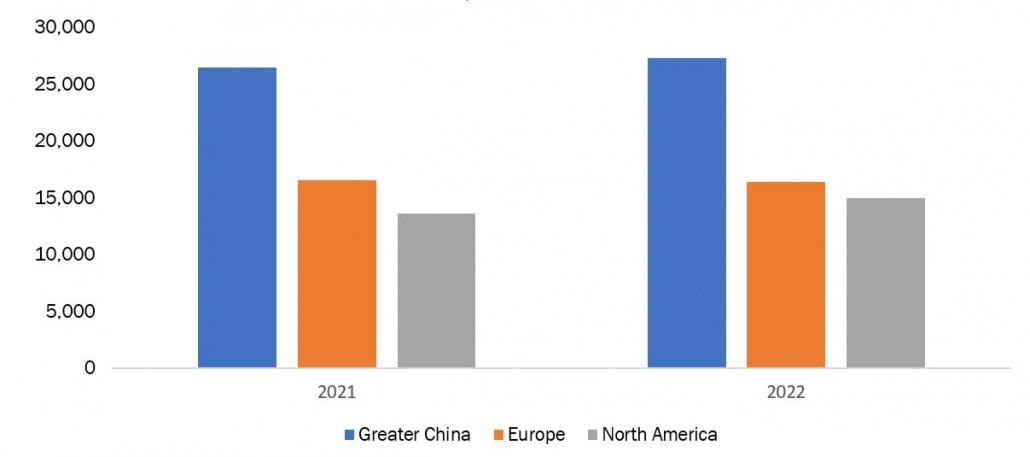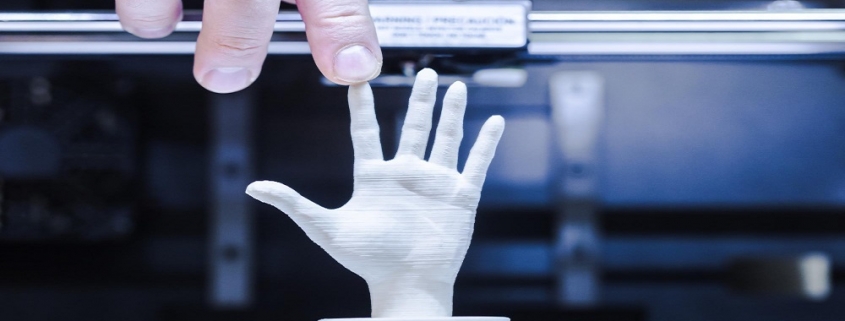The Top 10 3D Printing Technology
3D printing is the process of converting a digital design into a three-dimensional object. It can be completed in a variety of ways, typically layer by layer, with material being placed, joined, or solidified under computer control. It is used in rapid prototyping, which allows for the rapid creation of visual or functional prototypes, and in customized manufacturing, which produces personalized products such as medical implants, prosthetics, and dental devices. There are top 10 3D printing technologies that are finding their way into industrial applications are as follows:
FDM (Fused Deposition Modelling)
FDM (Fused Deposition Modelling) is a common method of material extrusion. The material is drawn using a nozzle and heated in a fixed path layer by layer in this 3D printing technology. Fused Deposition Modelling (FDM) is used in the aerospace industry due to its adaptability, low cost, and ability to produce complex parts. Its fast, cost-effective, and versatile manufacturing method allows the production of complex parts and is well-suited for the relatively low volume production and high mix of components in the aerospace sector.
With the help of fused deposition modeling, aircraft engineers can quickly create functional prototypes for fresh designs, allowing them to test and refine their concepts before investing in costly tooling or production runs. Bolstering growth in aircraft manufacturing coupled with technological advancement is expected to positively impact the market demand for FDM.
According to the General Aviation Manufacturers Association (GAMA), the value of airplane shipments in 2022 was $22.9 billion, representing a 5.8% increase over 2021. Furthermore, as per the source in 2022 piston helicopter deliveries increased by 7.2% to 194 units, and civil-commercial turbine helicopter deliveries increased by 8.2% to 738 units. The value of helicopter deliveries in 2022 was $4.5 billion, representing an 8.5% increase as well.
Key Developments
November 2023- Stratasys Ltd., a global leader in polymer 3D printing and additive manufacturing solutions, introduced the F3300 Fused Deposition Modeling (FDM) 3D printer at the Formnext Conference. The FDM printer provides unparalleled value to manufacturing customers with reduced labor, increased uptime, and higher part quality.
November 2021- Raise3D Introduces the RMF500, a large format FFF 3D printer utilizing carbon fiber reinforced materials with Industrial-Grade precision and consistency. It meets the industry’s demand for highly precise measurements and consistency by utilizing the most advanced FFF 3D printing technology and was developed to meet the quality and speed demands of high-level manufacturing to produce end parts that are more rigid, stronger, and more resistant to heat than conventionally 3D-printed parts.
Stereolithography (SLA)
Stereolithography (SLA) is an innovative and widely used 3D printing technology that belongs to the vat photopolymerization family. It is also known as resin three-dimensional printing and is used for layer-by-layer creation of models, prototypes, patterns, and production parts using photochemical procedures. SLA printing is quick and can produce almost any layout, and the printed parts have better surface quality and lack significant anisotropy.
In sectors such as automotive, stereolithography (SLA) printing allows automakers to effectively create models of parts and complete cars in less time, enabling faster design iterations and validation. Automakers can manufacture the final components directly from the printer, eliminating the need for additional machining processes or finishing steps. With the help of stereolithography automotive manufacturers can improve their overall manufacturing efficiency and with the bolstering growth in the global vehicle production rate, the demand for such 3D printing technology is anticipated to show positive growth.
According to the European Automobile Manufacturer’s Association In 2022, 85.4 million motor vehicles were produced globally which represented an increase of 5.7% compared to 2021. Also, as per the same source Greater China, Europe, and North America hold the maximum vehicle production in 2022 which is 27,222, 16,391, and 14,901 units compared to 2021.
Figure 1: Automotive Production in Europe, North America, And Greater China In 2021 And 2022

Source: European Automobile Manufacturer’s Association
Key Developments
July 2023- 3D Systems announced the addition of new materials to its Accura AMX Tough FR V0 Black, Tough FR V0 Black, and JCAST-GRN 20 Stereolithography (SLA). These new materials with outstanding performance allow for the efficient production of end-of-life parts in industries such as automotive.
January 2022- Formlabs, the leading 3D printing company, revealed the launch of the Form 3+ and Form 3B+ printing devices at CES 2022, their fastest 3D printers. Formlabs expands its industry-leading Stereolithography (SLA) 3D printer line with the Form 3+ and Form 3B+, increasing the speed and ease of use of its flagship desktop printer by 40 percent.
Digital Light Processing (DLP)
DLP (Digital Light Processing) is a 3-D printing technology that generates photographic polymer parts quickly. It is very similar to SLA with a single major distinction i.e., SLA tools use a laser to trace a layer while DLP devices use a projected light source to cure the entire layer at once. DLP (Digital Light Processing) printing can help print extremely detailed resin design items such as toys, jewelry molds, dental molds, figurines, and numerous other items.
Besides its ability to cure the entire layer at once such 3D printing technology provides other benefits as well, such as high speed, precision, and non-direct contact with cells, owing to which it is used in a variety of applications such as healthcare. Governments are investing and launching new policies to bolster the healthcare sector which is also expected to increase the prevalence of DLP (Digital Light Processing) 3D printing adoption to offer better healthcare to the consumers.
In April 2023, The National Medical Devices Policy, 2023, was approved by the Indian government. Six strategies are planned to take advantage of the sector’s potential, along with an implementation action plan. The policy is anticipated to help the Medical Devices Sector expand from $11 billion to $50 billion in the next five years.
Key Developments
November 2023– Raise3D launched the DF2 Solution at Formnex. The Raise3D DF2 Solution is a DLP printing system that offers fast printing velocity, flawless surfaces, high precision, and outstanding reliability. It is intended for engineering prototyping, manufacturing aids, and low-volume manufacturing, and it employs a wide range of high-performance resins as well.



